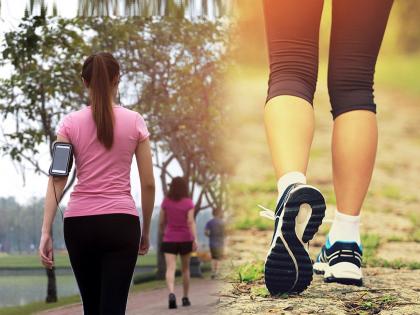Walking Proves Effective in Easing Low Back Pain, Study Finds
By Lokmat English Desk | Updated: June 21, 2024 12:26 IST2024-06-21T12:26:04+5:302024-06-21T12:26:28+5:30
New research published in The Lancet journal suggests that walking alone can alleviate low back pain for individuals with ...

Walking Proves Effective in Easing Low Back Pain, Study Finds
New research published in The Lancet journal suggests that walking alone can alleviate low back pain for individuals with a history of the condition. The study, which monitored approximately 700 adults recovering from recent episodes of low back pain, divided participants into three groups: those following a customized walking regimen, others attending physiotherapy sessions for six months, and a control group receiving no intervention.
Researchers, including those from Macquarie University, Australia, discovered that participants in the walking group experienced more significant relief and enjoyed a longer period without pain recurrence.
According to a report of PTI, "Walking is a low-cost, widely accessible and simple exercise that almost anyone can engage in, regardless of geographic location, age or socio-economic status," said senior author Mark Hancock, a professor of physiotherapy, adding that the findings could profoundly impact how low back pain is managed.
"Our study has shown that this effective and accessible means of exercise has the potential to be successfully implemented at a much larger scale than other forms of exercise," said lead author Natasha Pocovi from Macquarie University.
"Physiotherapy sessions requiring close expert supervision and expensive equipment can make them 'much less accessible to the majority of patients,' Hancock noted.
The researchers, however, were not certain about the exact reason why walking proved more effective in pain relief. They hypothesized that it could be attributed to the gentle movements that strengthen the spine, coupled with its relaxing effects and the release of 'feel-good' endorphins (happy hormones).
The World Health Organization (WHO) identifies low back pain as the primary cause of disability, significantly impacting quality of life. In 2020, approximately 620 million people worldwide were affected by this condition, with projections indicating that the number could rise to over 840 million by 2050.
Open in app